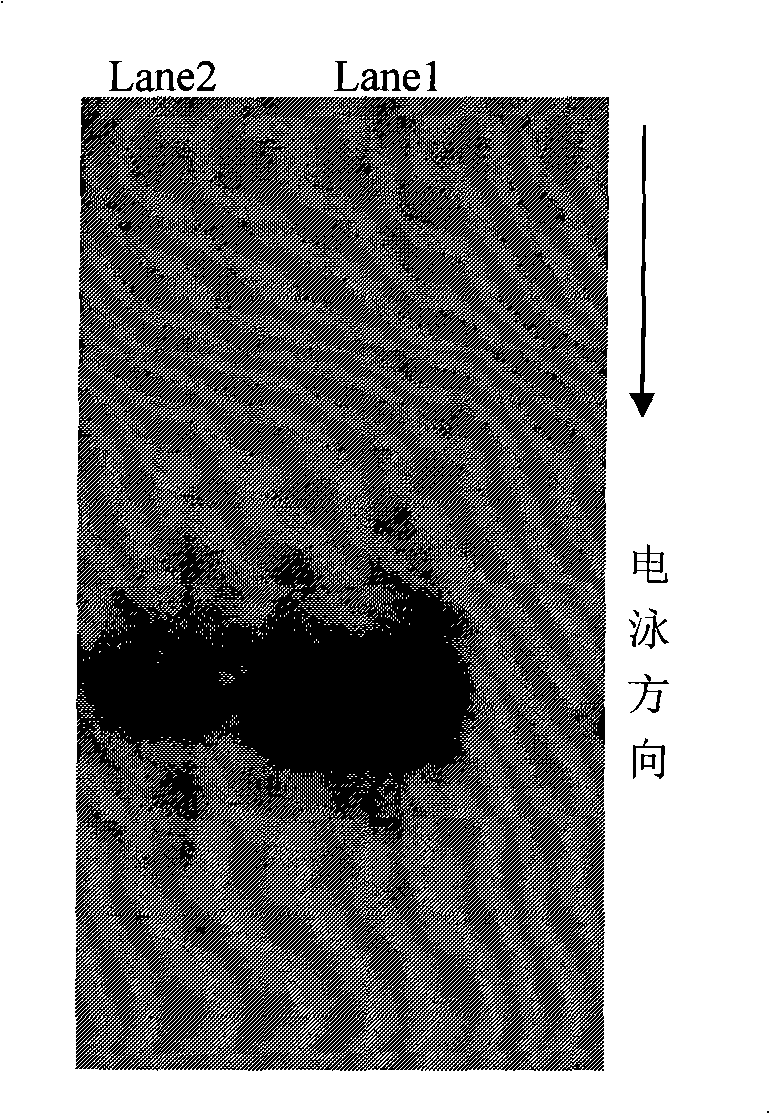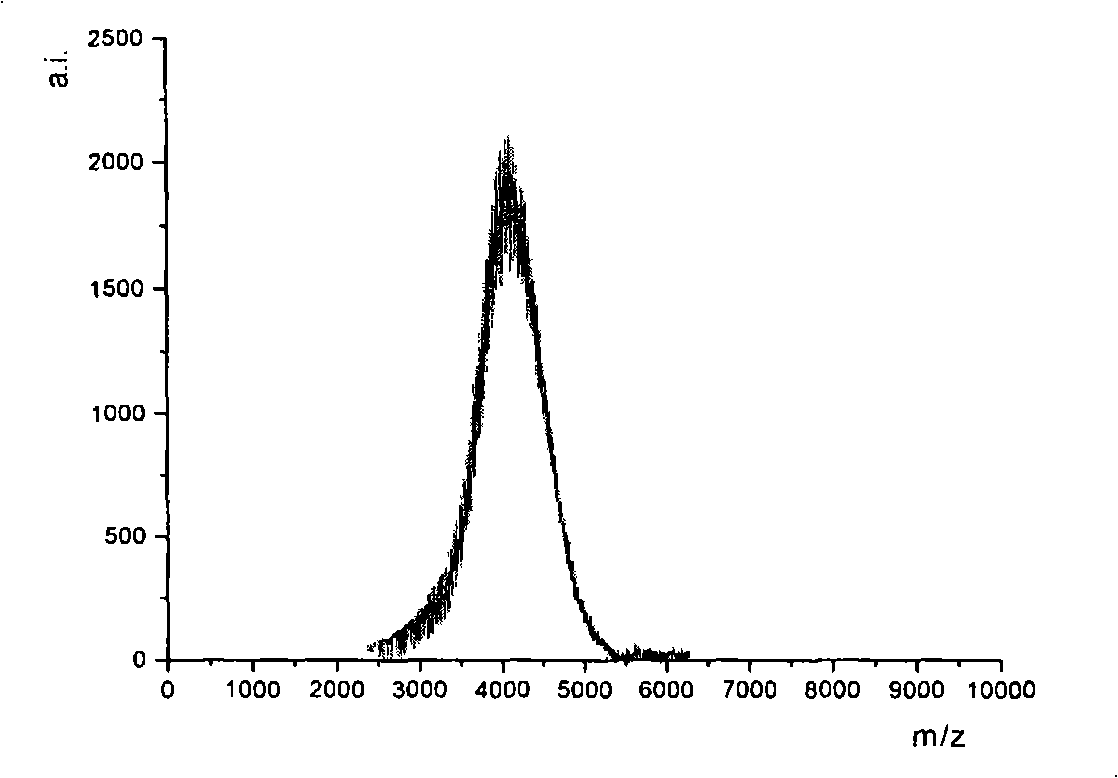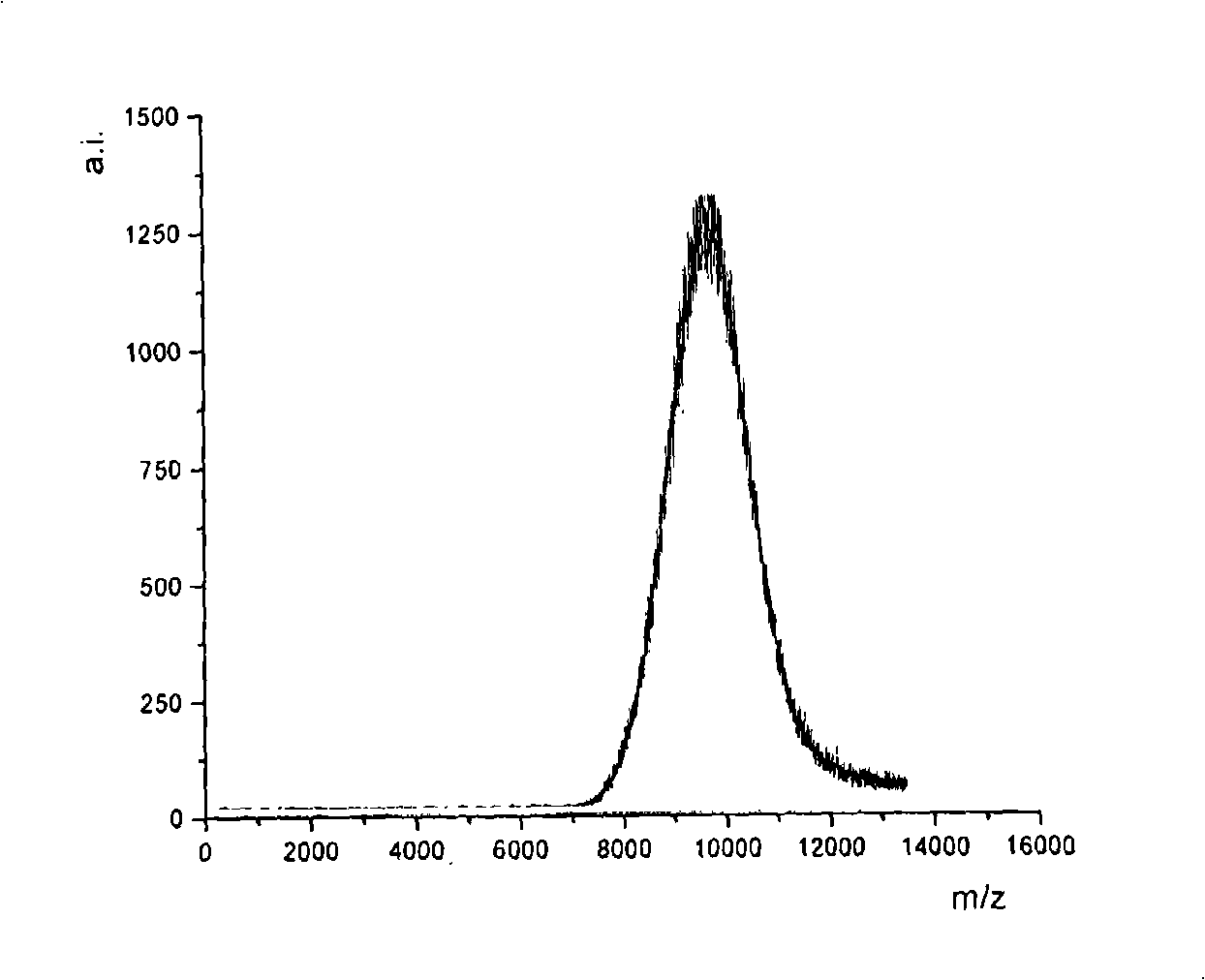Mono-modified polyethyleneglycol-insulin complexes and preparation method thereof
A technology of polyethylene glycol and amino polyethylene glycol, applied in the field of biomedicine, can solve the problems of difficult separation of modified products, increased cost of industrial production and the like
- Summary
- Abstract
- Description
- Claims
- Application Information
AI Technical Summary
Problems solved by technology
Method used
Image
Examples
Embodiment 1
[0038] Example 1: Preparation of an insulin-PEG complex whose end is connected to a PEG chain with a molecular weight of 5000
[0039] Step 1: Preparation of aminopolyethylene glycol with molecular weight of 5000
[0040] Get 20 grams (4 millimoles) of monomethoxy polyethylene glycol with a relative molecular weight of 5000, add in a 500 milliliter round bottom flask with 300 milliliters of toluene, heat and steam 100 milliliters of toluene to take out the moisture in the alcohol . The remaining solution was added with equimolar pyridine to reflux, and 2 times the molar amount of thionyl chloride (SOCl 2 ), after the dropwise addition, the temperature was lowered to 90°C to continue the reaction for 4 hours, cooled, filtered to remove the crystals, then evaporated toluene under reduced pressure, the residue was precipitated with ether, vacuum-dried by suction filtration to obtain 19 grams of product, which had a molecular weight of 5000 PEG-Cl. Dissolve this product in a sm...
Embodiment 2
[0051] Example 2: Preparation of an insulin-PEG complex whose end is connected to a PEG chain with a molecular weight of 10,000
[0052] Step 1: Preparation of aminopolyethylene glycol with molecular weight of 10000
[0053] Take 20 grams (2 mmol) of monomethoxypolyethylene glycol with a relative molecular weight of 10000, add it to a 500 milliliter round bottom flask filled with 300 milliliters of toluene, heat and steam 100 milliliters of toluene to take out the moisture in the alcohol . The remaining solution was added with equimolar pyridine to reflux, and 2 times the molar amount of thionyl chloride (SOCl 2 ), after the dropwise addition, the temperature was lowered to 90°C to continue the reaction for 4 hours, cooled, filtered to remove the crystals, then evaporated toluene under reduced pressure, the residue was precipitated with ether, vacuum-dried by suction filtration to obtain 19 grams of product, which had a molecular weight of 10000 PEG-Cl. Dissolve this produc...
Embodiment 3
[0064]Example 3: Preparation of an insulin-PEG complex with a PEG chain with a molecular weight of 20,000 at the end
[0065] Step 1: Preparation of aminopolyethylene glycol with molecular weight of 20000
[0066] Take 20 grams (1 mmol) of monomethoxypolyethylene glycol with a relative molecular weight of 20,000, add it to a 500-milliliter round-bottomed flask filled with 300 milliliters of toluene, heat and steam 100 milliliters of toluene to take out the moisture in the alcohol . The remaining solution was added with equimolar pyridine to reflux, and 2 times the molar amount of thionyl chloride (SOCl 2 ), after the dropwise addition, the temperature was lowered to 90°C to continue the reaction for 4 hours, cooled, filtered to remove the crystals, then evaporated toluene under reduced pressure, the residue was precipitated with ether, vacuum-dried by suction filtration to obtain 19 grams of product, which had a molecular weight of 20000 PEG-Cl. Dissolve this product in a s...
PUM
 Login to View More
Login to View More Abstract
Description
Claims
Application Information
 Login to View More
Login to View More - R&D Engineer
- R&D Manager
- IP Professional
- Industry Leading Data Capabilities
- Powerful AI technology
- Patent DNA Extraction
Browse by: Latest US Patents, China's latest patents, Technical Efficacy Thesaurus, Application Domain, Technology Topic, Popular Technical Reports.
© 2024 PatSnap. All rights reserved.Legal|Privacy policy|Modern Slavery Act Transparency Statement|Sitemap|About US| Contact US: help@patsnap.com










